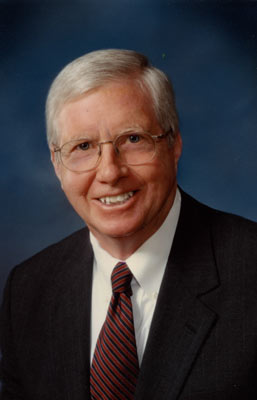
During his career in the pharmaceutical industry, Marshall Paul produced and promoted a significant body of information derived from primary promotion research that supports the concept that the creation and implementation of pharmaceutical promotion is as much a science as it is an art. The results of his efforts make it clear that it is possible to cost-effectively manage the process. By providing proof of what, where, when, how, and why pharmaceutical promotion works as part of the overall marketing process, Marshall helped companies and their agencies justify, create, and use properly funded advertising to leverage their detailing efforts and to maximize the return on their investment in promotion.
Marshall worked closely with agencies to help guide their development of efficiently designed advertising that was pre-tested and appropriately placed. He also helped publishers provide the cost-effective exposure opportunities needed to communicate key messages, and led the development of Ad-Chek®, a landmark pharmaceutical advertising research study that provided proof of journal readership in general as well as the value of various ad positions within publications.
Marshall spent fifty years in pharmaceutical marketing and related research activities, on both the manufacturer/marketer and the service sides of the business. He worked as a Market Research Analyst for Merck (1963-65), served as Director of Market Research/VP Long-Range Planning/President of the Communications Division for IMS (1965-82), became co-owner of Healthcare Communications, Inc. (HCI) in 1982 with Mahesh Naithani, and eventually became its President. When HCI was sold to ACNielsen in 1997, Marshall served as President of ACNielsen/HCI through 2010.
In fulfilling the stated vision of HCI when it was created in 1982, Marshall led the company’s efforts to develop a promotion research model to serve the agency, manufacturing, and service sides of the pharmaceutical marketing industry. The beginning was the successful revival of the Media-Chek® journal readership audit which provided a basis for future HCI product launches. This was followed by the launch of Postest,® a syndicated study designed specifically to measure pharmaceutical promotion campaign awareness and product recall – as well as message retention, believability and relevance to the target audience. This program was followed by CTS-2000, which documented sales response to pharmaceutical promotion (ROPI…Return on Promotional Investment). These two services combined to provide rich data bases from which norms were established by therapeutic class, type of product, and budget levels.
The next step was the creation of a planning tool that utilized the elements of Media-Chek, the Non-Journal Media Audit, JAR (the only journal spending audit at the ad unit level), Postest, and CTS-2000, and incorporated a new concept — the “Relative Value of Exposures”–to build a Promotion Planning Model. This model determines how much to spend in pharmaceutical marketing, as well as where to spend it most efficiently.
When HCI was sold to ACNielsen in 1997, Marshall served as the president of the newly created ACNielsen/HCI organization. In this role, he continued to promote the programs developed by HCI, and expanded offerings.
Aside from proving that good advertising increases sales, Marshall’s most important contribution is that leveraging is at the heart of good marketing practices. It is the ability to use less expensive forms of promotion to magnify the effect of the more costly forms, thereby driving the potential for positive Return on Promotional Investment. Further, his work showed that the norms generated by collecting, analyzing, and applying attitudinal response data from more than 8,100 promotional campaigns provided convincing proof of how pharmaceutical advertising works. This, in turn, led to a number of important firsts: documentation that there is direct correlation among ad spending, campaign awareness, product recall, and message retention, by therapeutic class, enabling the establishment of measurable advertising objectives; documentation of the leveraging effect of sales aid usage and how it can magnify the impact of a sales call; documentation that demonstrates how the use of multiple media channels improves response, including the inclusion of digital media.
Further, as the direct result of collecting both attitudinal and behavioral data on 162,000 physicians covering 87 campaigns, Marshall’s work documented that print can increase return on investment from detailing 72% of the time, and also showed that return on investment for effective campaigns varies significantly, depending on product age and type. Most importantly, a prospective, experimentally designed study confirmed the above findings and further demonstrated that a successfully pretested advertising campaign raised campaign awareness, product recall, message retention, detailing awareness, first choice therapy, and new prescriptions in direct response to three levels of exposure.
During his career, Marshall provided the crucial information that allowed marketers to more efficiently allocate their funds and efforts, and communicate more effectively with their audience.